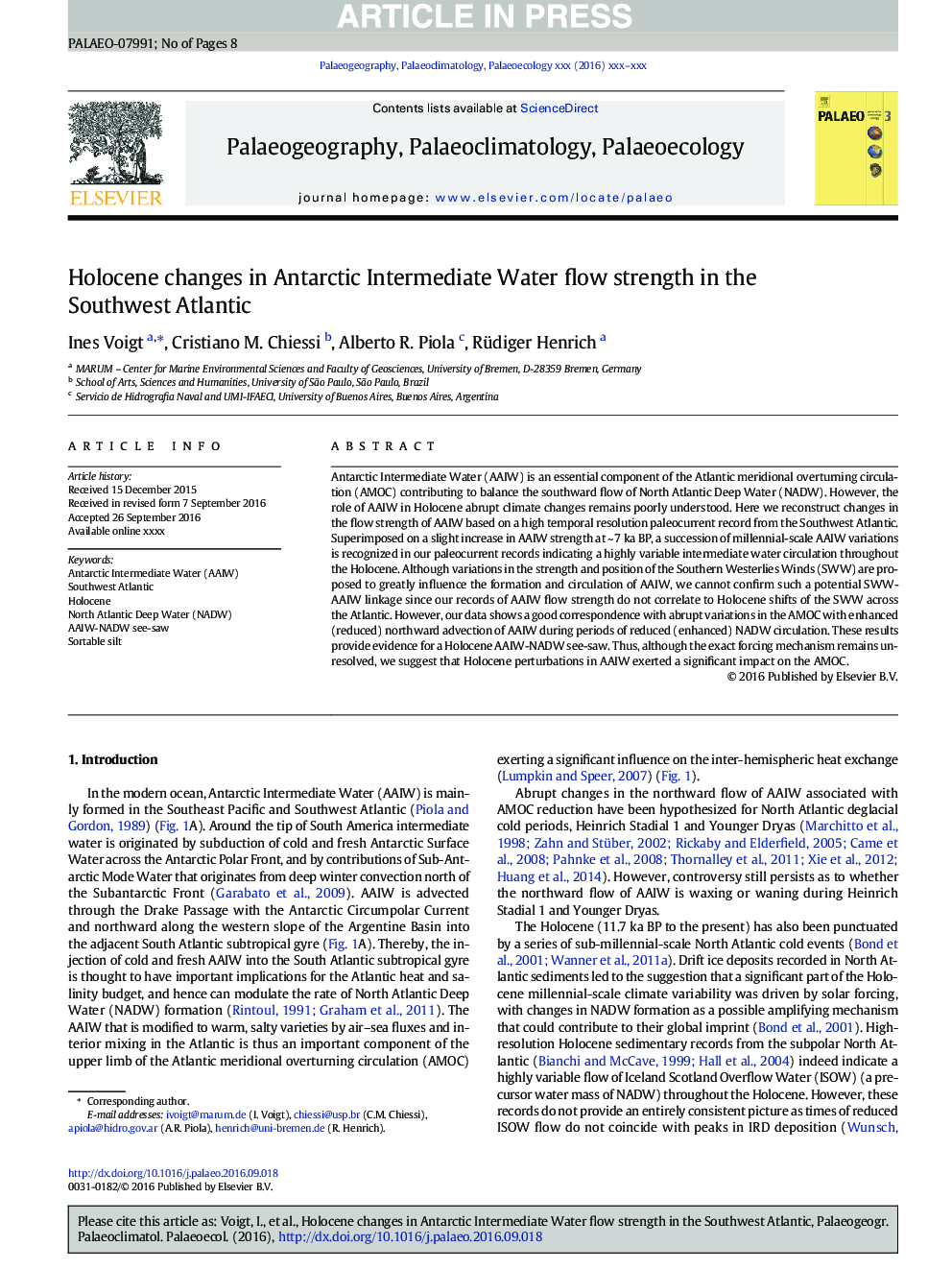| Article ID | Journal | Published Year | Pages | File Type |
|---|---|---|---|---|
| 5755737 | Palaeogeography, Palaeoclimatology, Palaeoecology | 2016 | 8 Pages |
Abstract
Antarctic Intermediate Water (AAIW) is an essential component of the Atlantic meridional overturning circulation (AMOC) contributing to balance the southward flow of North Atlantic Deep Water (NADW). However, the role of AAIW in Holocene abrupt climate changes remains poorly understood. Here we reconstruct changes in the flow strength of AAIW based on a high temporal resolution paleocurrent record from the Southwest Atlantic. Superimposed on a slight increase in AAIW strength at ~Â 7Â ka BP, a succession of millennial-scale AAIW variations is recognized in our paleocurrent records indicating a highly variable intermediate water circulation throughout the Holocene. Although variations in the strength and position of the Southern Westerlies Winds (SWW) are proposed to greatly influence the formation and circulation of AAIW, we cannot confirm such a potential SWW-AAIW linkage since our records of AAIW flow strength do not correlate to Holocene shifts of the SWW across the Atlantic. However, our data shows a good correspondence with abrupt variations in the AMOC with enhanced (reduced) northward advection of AAIW during periods of reduced (enhanced) NADW circulation. These results provide evidence for a Holocene AAIW-NADW see-saw. Thus, although the exact forcing mechanism remains unresolved, we suggest that Holocene perturbations in AAIW exerted a significant impact on the AMOC.
Related Topics
Physical Sciences and Engineering
Earth and Planetary Sciences
Earth-Surface Processes
Authors
Ines Voigt, Cristiano M. Chiessi, Alberto R. Piola, Rüdiger Henrich,
